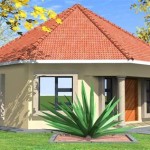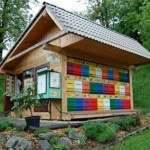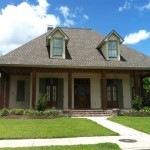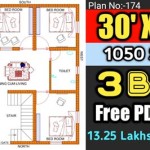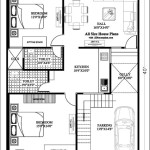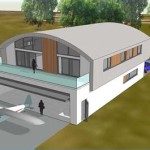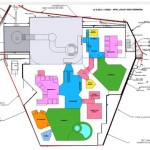Cob House Building Plans: A Comprehensive Guide
Cob houses offer a unique blend of sustainability, affordability, and artistic expression. Building with cob, a mixture of clay, sand, straw, and water, allows for flexible designs and integrates naturally with the surrounding environment. This article explores the essential aspects of cob house building plans, from initial design considerations to sourcing materials and understanding the construction process.
Key Design Considerations for Cob Houses
Careful planning is crucial for a successful cob building project. The design phase lays the foundation for a structurally sound and aesthetically pleasing home. Several key factors influence the design process:
- Climate: The local climate plays a significant role in determining the optimal design. Consider factors like rainfall, temperature fluctuations, and sun exposure to create a comfortable and energy-efficient home.
- Site Analysis: Assessing the building site is essential. Soil type, drainage, topography, and access to water are all crucial considerations. A thorough site analysis informs decisions regarding foundation type and building orientation.
- Size and Layout: The size and layout of the cob house should reflect the needs and lifestyle of the occupants. Careful space planning maximizes functionality and ensures a comfortable living environment.
- Building Codes and Regulations: Research local building codes and regulations pertaining to cob construction. Compliance with these regulations is essential for obtaining necessary permits and ensuring the safety and legality of the structure.
- Budget: Establish a realistic budget early in the planning process. Cob building can be cost-effective, but accurate budgeting helps manage expenses and avoid unforeseen financial challenges.
Sourcing Materials for Cob Construction
Cob building relies on readily available natural materials, contributing to its sustainable nature. Sourcing these materials locally reduces transportation costs and environmental impact:
- Clay: The primary component of cob, clay provides the binder that holds the mixture together. A soil test can determine the clay content of the soil on-site or identify suitable clay sources nearby.
- Sand: Sand adds structural integrity and prevents cracking in the cob mixture. Sharp, coarse sand is preferred for optimal performance.
- Straw: Straw acts as a reinforcing fiber, adding tensile strength and preventing shrinkage. Wheat, oat, or barley straw are commonly used in cob construction.
- Water: Water activates the clay and binds the materials together. Clean, potable water is essential for achieving the correct cob consistency.
Understanding the Cob Building Process
Cob building involves a hands-on, iterative process that blends traditional techniques with modern adaptations. Understanding the stages of construction is vital for a successful outcome:
- Foundation: A strong foundation is crucial for supporting the cob walls. Common foundation types include rubble trench, stone, or concrete strip foundations.
- Wall Construction: Cob walls are built up in layers, allowing each layer to dry before adding the next. The cob mixture is mixed by foot or with machinery and then applied to the wall foundation.
- Window and Door Openings: Lintels, typically made of wood or stone, are installed to support the cob above window and door openings.
- Roofing: Various roofing options are compatible with cob construction, including living roofs, thatched roofs, and conventional shingle roofs.
- Plastering and Finishing: A final layer of plaster, often made with clay or lime, protects the cob walls from the elements and provides a smooth, finished surface.
Finding and Adapting Cob House Plans
Accessing pre-designed cob house plans can provide a valuable starting point for your project. However, modifying these plans to suit specific site conditions and individual needs is often necessary:
- Online Resources: Numerous online resources offer cob house plans and design inspiration.
- Books and Publications: Books dedicated to cob building often include detailed plans and construction guides.
- Architects and Designers: Consulting with an architect or designer experienced in cob construction can provide expert guidance and customized plans.
- Adapting Existing Plans: Pre-designed plans can be adapted to accommodate specific site conditions, building codes, and individual preferences.
Importance of Hands-on Experience
Gaining practical experience through workshops or volunteering on cob building projects is invaluable. Hands-on learning provides a deeper understanding of the material and the construction techniques involved.
Benefits of Cob Construction
Cob building offers a multitude of benefits, making it an attractive option for sustainable and eco-conscious builders.
- Sustainability: Cob utilizes natural, locally sourced materials, minimizing environmental impact.
- Affordability: The readily available materials and labor-intensive nature of cob building can contribute to cost savings.
- Energy Efficiency: Cob's thermal mass provides excellent insulation, reducing heating and cooling costs.
- Design Flexibility: Cob's malleable nature allows for creative and unique architectural designs.
Maintenance and Durability of Cob Structures
Proper maintenance ensures the longevity and durability of cob structures. Regular inspections and timely repairs are essential for preventing damage and preserving the integrity of the building.
- Roof Maintenance: Ensure proper drainage and address any leaks promptly to prevent water damage.
- Wall Protection: Applying a protective layer of plaster or limewash helps safeguard cob walls from the elements.
- Foundation Inspection: Regularly inspect the foundation for any signs of settling or cracking.

Cob House Floor Plans For The Home

Image Detail For Cob House Plans Submited Images Pic 2 Fly Floor

Cob House Plan Inspiration Kerpiç Ev Tasarım Evler

Seismic Engineering Diagram Cob House Plans Eco Design

Stunning Mud And Wood Architecture

Cob House Plans Natural Building Designs This

English Earthbag Cottage Plan Cob House Plans Round

Cob House Plans Natural Building Designs This

Green Home Building Cob

Solar Oval One Plan

